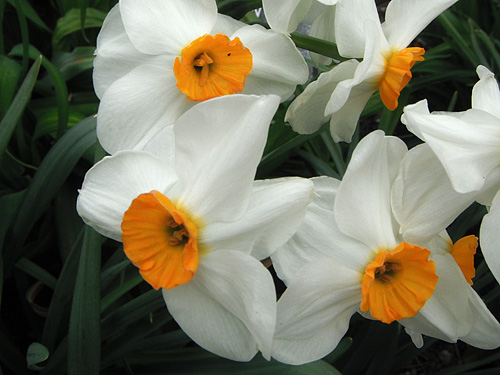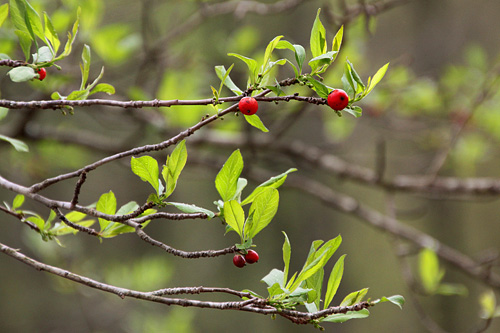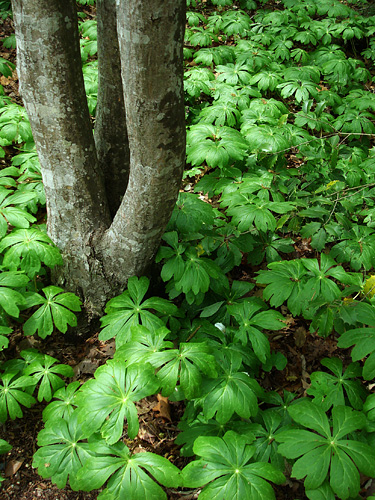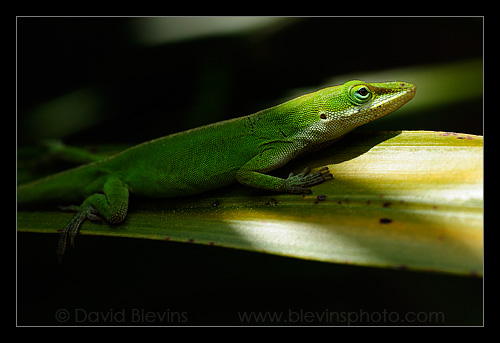I had a meeting last week with a painted bunting. I came down from Raleigh; the bunting came up from somewhere in Cuba or Central America, and we met on Bald Head Island. I decided last year that the book I am currently working on about North Carolina’s barrier islands needed a photograph of a painted bunting. They can be quite common on the southern barrier islands of North Carolina, among the maritime forests, hammocks, or shrub thickets. Most people never see them, which is a shame because they are so outrageously spectacular. Some say the males look as if they have just leapt off the page of a children’s coloring book, I presume because young children aren’t encumbered by logic or previous experience when choosing which colors to use.
Since I had never worked with painted buntings before, I had no idea what to expect. I have been very lucky so far with this book, and I have learned that just putting myself in a position to succeed is often the most important thing. So many things are beyond my control that when I do succeed I just have to look to the sky and thank the universe for the gift when everything does come together.
This story began last fall when a workshop participant on Bald Head Island mentioned her friend had painted buntings coming to her feeder the previous summer. I was not interested in photographing birds on feeders, but at least I now knew a place where they would occasionally come down from the tree tops. What was even better about the location was the back porch allowed me to be up at the height the birds were perching, rather than looking up at them from the ground. The owners of the home graciously gave me permission to spend time on their property once the buntings retuned in the spring.
Fast forward to the predawn hours of last week, April 25th. The painted bunting had just arrived a week or so before to establish his three acres of territory for the breeding season. I arrived the night before so I could be on site before dawn. Although I had not worked with painted buntings before, I have worked with enough birds to know they love to sing at dawn, and the image I really wanted was a close-up of a male singing. I followed a boardwalk out to the edge of a maritime hammock and looked out into the salt marsh as the dawn light slowly started to spread across the sky.
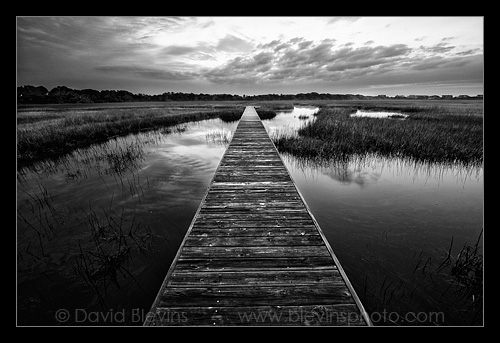
Boardwalk to Bald Head Creek
While I watched the sunrise and waited for the birds to wake up I familiarized myself with the song of the painted bunting using a recording on my phone. You can listen to some recordings of the sweet warble of the painted bunting at the all about birds website.
As soon as light started to fill the sky, the birds started singing; northern cardinals, yellow-rumped warblers, Carolina wrens, house finches, and one painted bunting. I could hear him but I could not see him. I moved to the porch to get a better view over the vegetation. Before long the painted bunting perched in the cedar tree right by the porch and the feeder. I thought photographing singing behavior was going to be difficult, but he was singing in the first photograph I made of him.
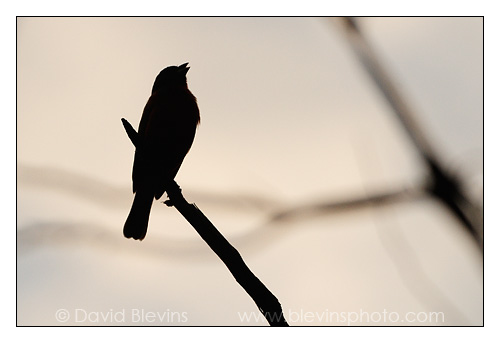
Painted Bunting Silhouette
This image made me laugh because the low sun completely silhouetted the bird against the dawn sky and a silhouette of a painted bunting really seems to be missing the point to me. But it was a good sign that this was going to eventually work. As the morning wore on he was singing constantly. He would perch on top of a tree and sing, move to another tree top and sing, and slowly move around his territory. About once every hour he would end up back in the area of the feeder. He would perch on the live oak near the feeder and sing, fly down to the feeder and sing, eat a few seeds and sing, fly to the nearby cedar tree and sing, and then fly off to patrol his territory and sing some more.
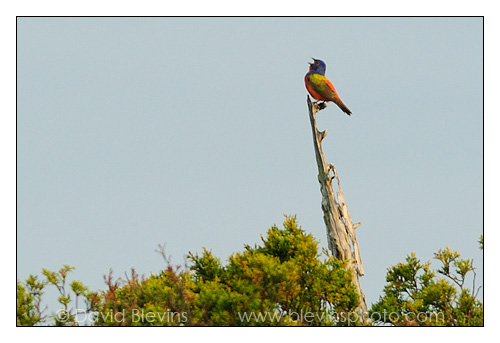
Painted bunting singing in the tree tops
While this photograph shows him singing, it is just not good enough for the book; you can’t look into his eye and feel, just for this moment, that you know him.
While I waited the hour for him to come back, I had plenty of time to watch all the other activity in the area.
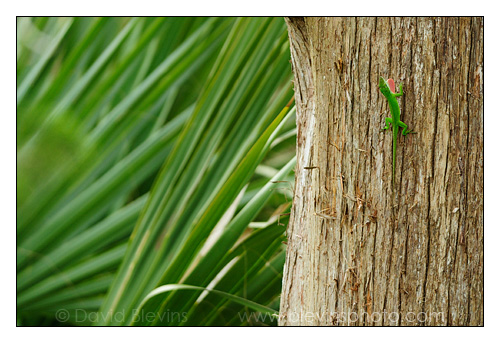
Green Anole
This anole was proudly displaying his dewlap on the same cedar tree the painted bunting liked to use. I really like the out of focus palmetto leaves in the background.
While watching the anole I noticed a second painted bunting. I could still hear the first one singing behind me so I knew this was a second bird. Unlike the first painted bunting, this one came in low, amongst the shrubs, and quiet, not making a peep. He went straight to the feeder, ate some seeds, and quietly flew off in the direction he came. It was obvious that this feeder was inside the territory of the male I had been photographing, and this second bird knew it.
I had one chance every hour to make the image I was after, but each time the painted bunting came near he was either too far away or obscured by branches. Finally, the sixth time, after about six hours, he perched right in front of me in the nearby live oak. The light was soft except for a shaft of hard light striking the green feathers on his back and his blue face.
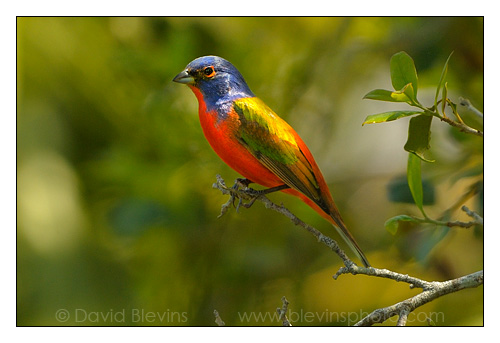
Painted Bunting
I was only able to make two images before he started singing. It turns out photographing him not singing was the difficult thing. He lifted his head to the sky and let out his sweet warbling song. When he lifted his head he moved it out of the shaft of hard light that was striking his face, rendering more feather detail and more saturated color. His posture seemed to mirror the way I give thanks to the universe in moments like this, when months of planning, serendipitous conversations, and 6 hours of constant vigilance all come together to make an image. You will have to wait for the book to see the image of him singing, but this last image gives a sense of the intimate connection I was trying to capture.

